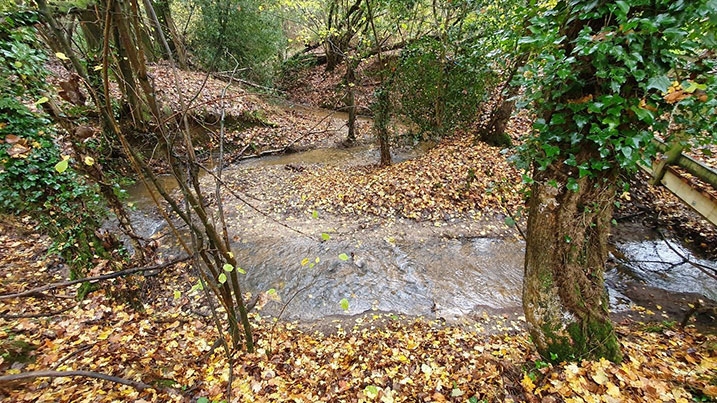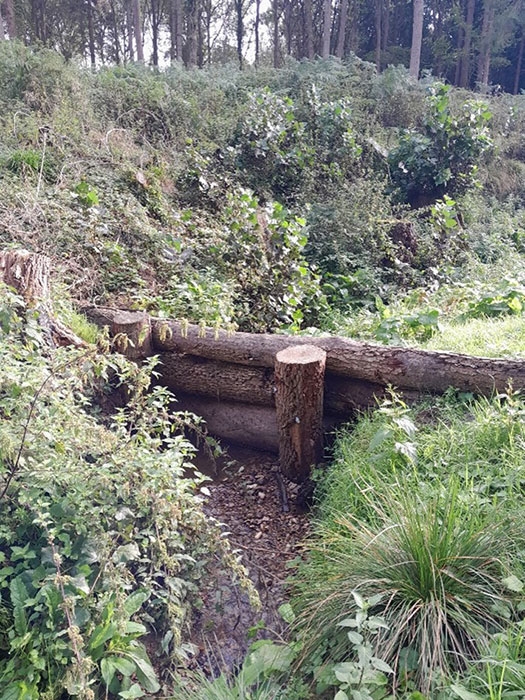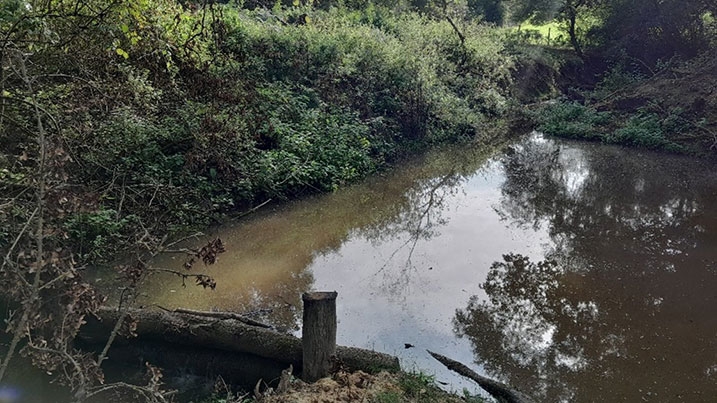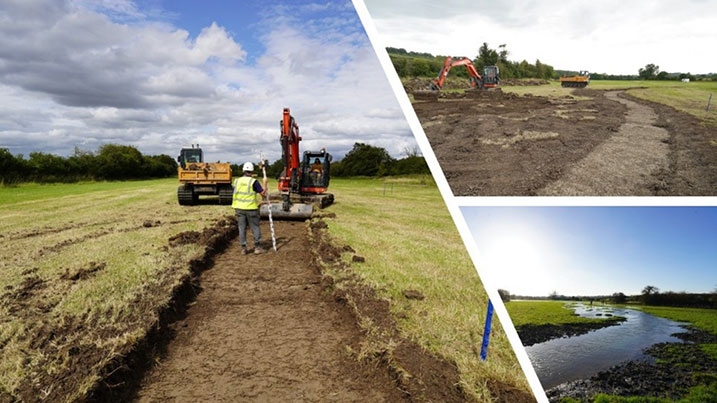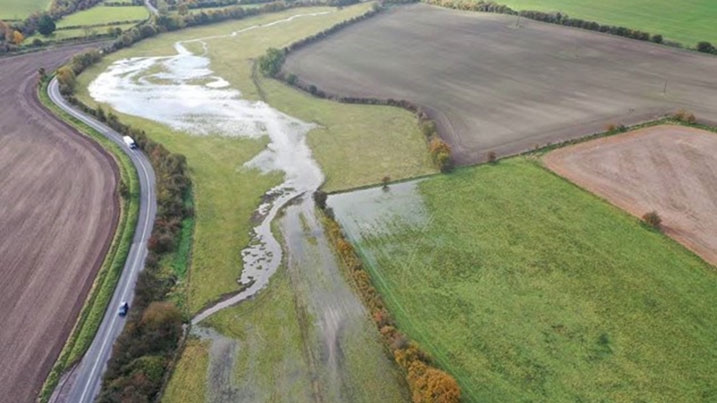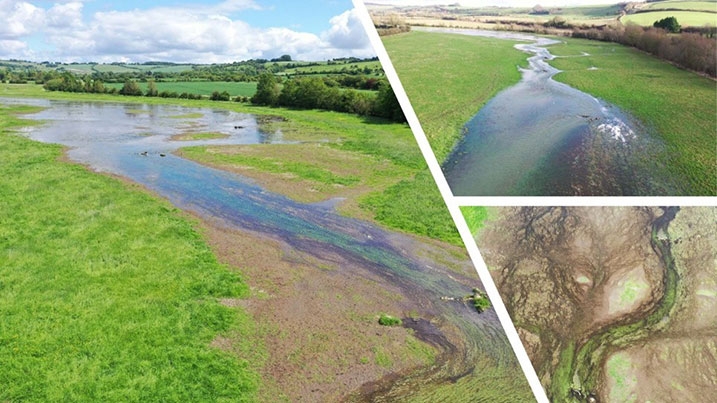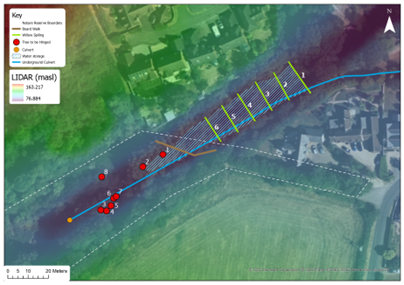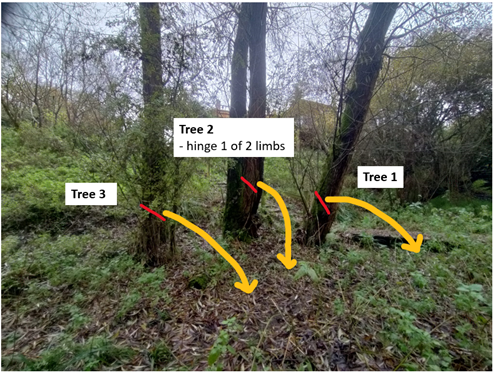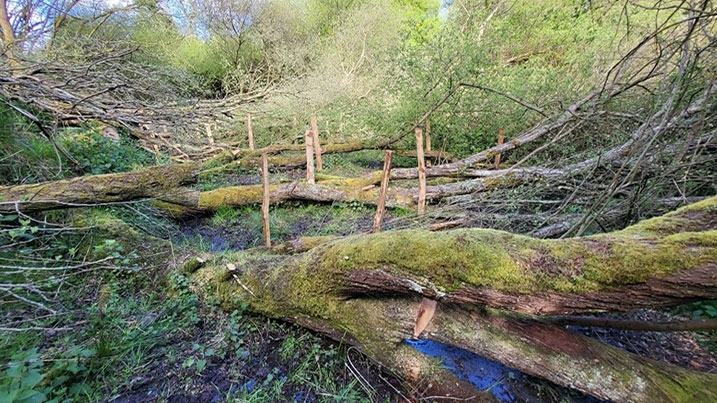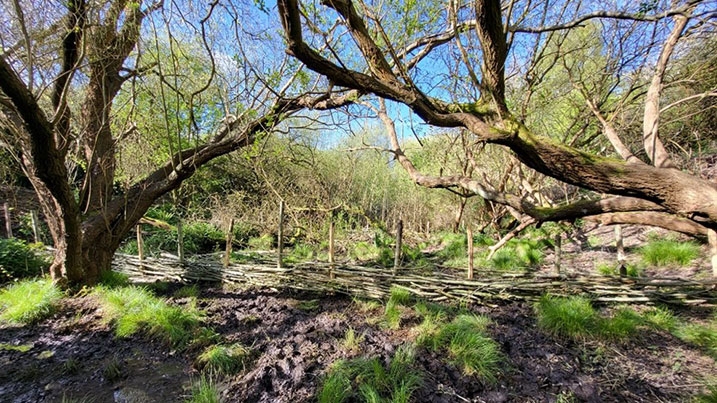Natural Flood Management advice in Thames catchment
We’re working with local authorities and partners in the Thames region, providing expert advice on natural flood management (NFM) and helping to put solutions into practice for communities.
What’s NFM and how does it work?
NFM works hand-in-hand with nature to reduce flood risks by storing and slowing the flow of water. But its impact doesn’t end there. NFM helps to boost biodiversity, clean water, reduce the impact of drought and create spaces for communities to connect with nature.
The challenge
Climate change is likely to bring more intense flash-flooding to the UK. When this happens, heavy rainfall reaches fast-flowing streams and rivers too quickly and traditional flood defences alone are not enough to protect us.
- The Thames catchment covers over 16,200 square kilometres of land that drains into the River Thames
- It’s estimated that 1.7 million people are at risk of flooding from rivers and the sea
- Approximately 2.3 million people are at risk of flooding from surface water
By 2050, it’s estimated the annual average losses from coastal and river flooding in England and Wales could rise to between £1.6 and £6.8 billion.

Our work so far and what’s to come
We’re working with flood risk managers, stakeholders and communities in the Thames catchment to advise them on how to work with nature to reduce flood risks, sharing best practice in NFM and supporting projects access funding.
It’s vitally important work and we’re thrilled to be extending this collaboration until March 2027. An additional £1.2 million has been allocated for the project by the Thames Regional Flooding and Coastal Committee, following its initial £1.5 million investment.
This investment allows us to continue identifying areas in the Thames catchment that will benefit from NFM and to upskill more communities, so they’re equipped to manage their flood risk.

What we hope to achieve
Webinars - Discover more about Natural Flood Management
Watch our webinars to hear from experts about best practice for delivering NFM in your area, the wider benefits it brings and signposting for funding opportunities.
Watch our webinarsCase studies
Get in touch
If you have any questions or enquiries about this project, please contact the Thames Catchment NFM Advisor, Corrie Grafton.
Follow the project's LinkedIn page for updates, information and learning opportunities in support of NFM in the Thames catchment.
You might also be interested in
Partners and funding
This project is funded by the Thames Regional Flood and Coastal Committee (Thames RFCC)


